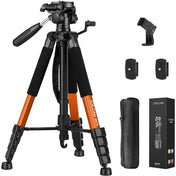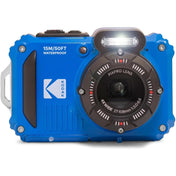Portrait photography is a captivating art form that transcends mere image capture. It weaves together emotion, personality, and storytelling, allowing viewers to connect with subjects on a deeper level. Whether you are a seasoned photographer or just starting your journey, exploring the magic of portrait photography can open doors to new creative potentials. In this post, we'll delve into the key elements of portrait photography, discuss the essential techniques for capturing stunning portraits, and how utilizing an Olympus mirrorless camera can elevate your photography game.
The Essence of Portrait Photography
Portrait photography centers around capturing an individual's essence. It's about more than just a pretty face; it’s about showcasing the personality, mood, and spirit of the subject. Understanding what makes a compelling portrait is the first step in mastering this beautiful craft.
Understanding Your Subject
Every great portrait begins with a genuine connection to the subject. Whether it's a family member, friend, or client, establishing rapport is crucial. Take the time to engage in conversation, understand their story, and learn about their preferences. This not only puts them at ease but also helps you capture their personality through your lens.
Lighting – The Heart of Photography
Lighting can make or break your portrait photography. The key is to harness natural light whenever possible. Soft, diffused light creates a flattering effect and enhances the features of your subject. Golden hour, the time shortly after sunrise or before sunset, is particularly magical for portrait photography. Consider using an Olympus mirrorless camera equipped with a fast lens to take advantage of this beautiful light for stunning results.
Essential Techniques for Stunning Portraits
Mastering portrait photography involves a variety of techniques that can enhance your images. Here, we’ll explore some of the fundamental principles that can help you create captivating portraits.
Composition Matters
Composition is crucial in portrait photography. Use the rule of thirds to create balanced and engaging shots. Position your subject off-center and capture their gaze towards the frame to draw the viewer's attention. Explore different angles and perspectives as well; shooting from above or below can add depth and interest to the transition between backgrounds and foregrounds.
Depth of Field
Creating a shallow depth of field is a popular technique in portrait photography, as it blurs the background and emphasizes the subject. With an Olympus mirrorless camera, you can easily achieve this effect with a wide aperture setting, allowing for exquisite bokeh that enhances the mood of your portraits.
Candid vs. Posed Shots
Candid shots can evoke genuine emotions and capture natural expressions, while posed shots can display artistry and intention. A successful portrait session should incorporate both approaches. Encourage your subjects to act naturally and engage in activities they enjoy to capture spontaneous moments, but also guide them into poses that highlight their best features.
Exploring Techniques with Your Olympus Mirrorless Camera
The right equipment can significantly impact your portrait photography journey. The Olympus mirrorless camera is especially powerful for portrait photography due to its compact size and stunning image quality.
Image Stabilization
One of the standout features of Olympus mirrorless cameras is their in-body image stabilization. This technology helps you capture sharp images, even in low-light situations. This feature is particularly useful when photographing portraits without a tripod, allowing for versatility in any shooting environment.
Customizable Settings
With an Olympus mirrorless camera, you can easily customize settings such as ISO, shutter speed, and aperture. This flexibility affords you immense creativity during a shoot, enabling you to adapt to changing lighting conditions or your subject’s movements.
Lightweight and Portable
Unlike bulky DSLRs, the lightweight design of Olympus mirrorless cameras makes them highly portable. This means you can carry them anywhere, making spontaneous portrait opportunities more feasible. Whether you’re shooting at a local park or in a bustling city, the lightweight design allows you to keep shooting without getting fatigued.
The Importance of Post-Processing
Once you've captured your portraits, don't underestimate the power of post-processing. Editing can enhance colors, adjust lighting, and refine detail to breathe new life into your images. Here are some tips to keep in mind during your editing process:
Color Correction
Ensure that skin tones look natural by performing proper color correction. Each subject's skin tone varies, and editing allows you to maintain authenticity while enhancing the overall look of your portrait.
Retouching
While it's crucial to embrace the naturalness of your subjects, light retouching can enhance the portrait's appeal. Removing minor blemishes and smoothing skin can bring a polished look without losing authenticity.
Sharpening Details
Sharpening can enhance texture in hair and eyes, vital components in portraiture. Use sharpening tools subtly, as over-editing can result in an unnatural look.
Embracing Different Styles of Portrait Photography
Portrait photography isn't a monolith; various styles exist, each offering its unique charm. Exploring different styles can enrich your photographic experience and cater to diverse audiences.
Environmental Portraits
Environmental portraits place a subject in their surroundings, reflecting aspects of their life or personality. These portraits tell a story that goes beyond the individual, allowing viewers to discover more about the person based on their environment.
Studio Portraits
Studio portraits use controlled lighting and backdrops to create polished images. This style requires significant planning, including lighting setups and background choices, resulting in refined, timeless photographs.
Creative Portraits
For the artistically inclined, creative portraits can take various forms, including conceptual, surreal, or fantasy styles. This genre allows enormous freedom for expression, enabling photographers to push boundaries and create something truly unique.
Tips for Successful Portrait Sessions
To conduct a successful portrait session, some planning and preparation will go a long way. Here are some practical tips to consider before your next shoot:
Plan Your Locations
Visit potential locations beforehand to assess the lighting and backgrounds. Consider the time of day and how lighting changes, ensuring you're best prepared for your shoot.
Wardrobe Selection
Discuss wardrobe choices with your subjects. Neutral or solid colors often photograph best, as they draw attention to the face and expressions. Additionally, avoid busy patterns that may distract from the subject.
Pacing the Session
Keep the energy of your session lively by pacing it appropriately. Schedule breaks, especially during longer shoots, to prevent fatigue and keep both you and your subject engaged and enthusiastic.
Share the Magic of Portrait Photography
In a world that thrives on connection, portrait photography captures the essence of the human spirit. Utilizing techniques learned throughout this journey, along with the powerful capabilities of an Olympus mirrorless camera, you can explore this beautiful art form and create lasting memories, not only for yourself but for others as well. As you embark on your portrait photography adventures, remember to embrace creativity and celebrate the subjects that come before your lens. Together, let's capture the extraordinary in the ordinary and reveal the stories behind each portrait.
Explore the creations of a fellow Shopify or Wix store owner. Follow this link to their online store. Please be advised that this is a promotional link, and we cannot guarantee the content of the linked store.











